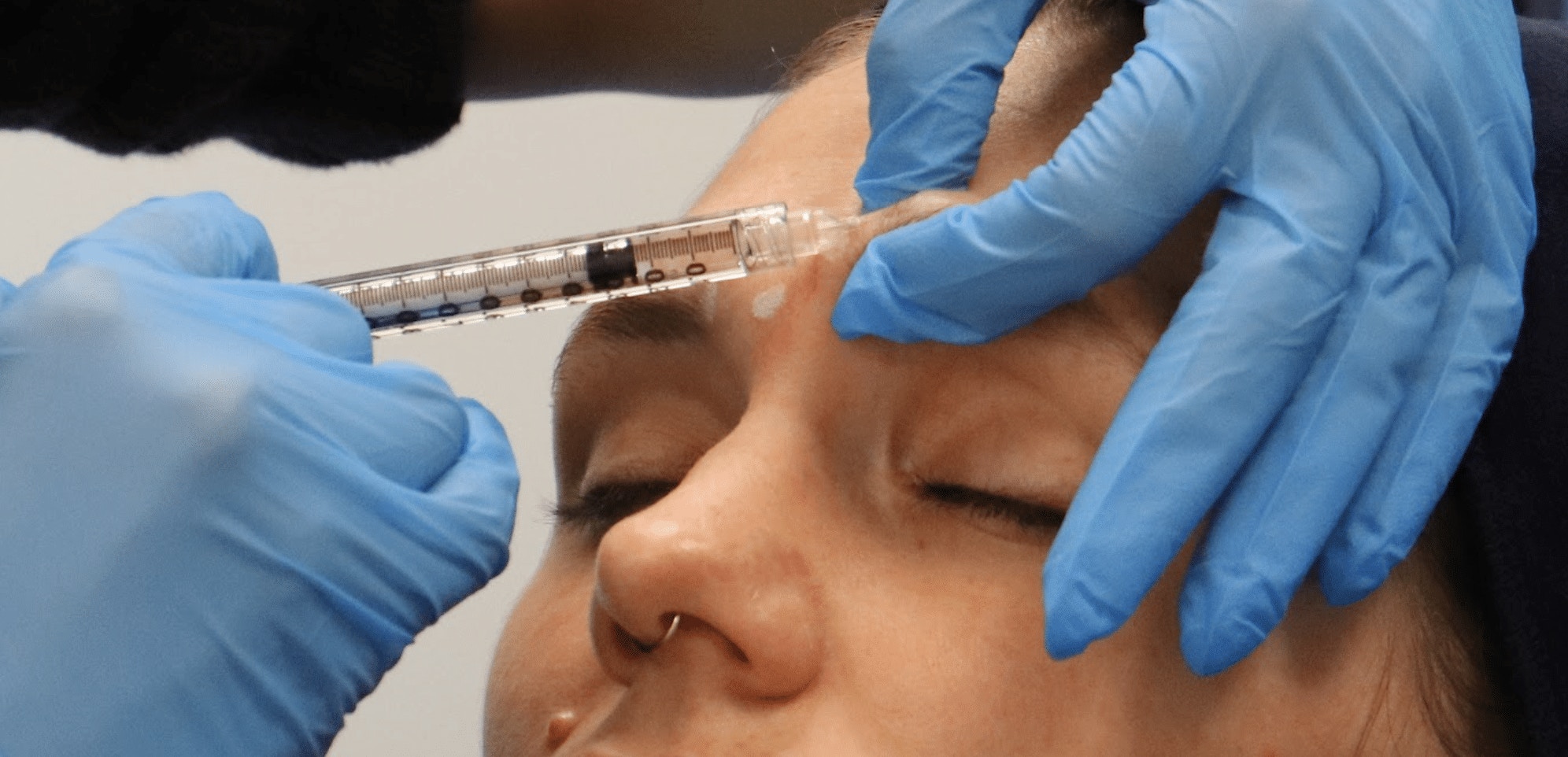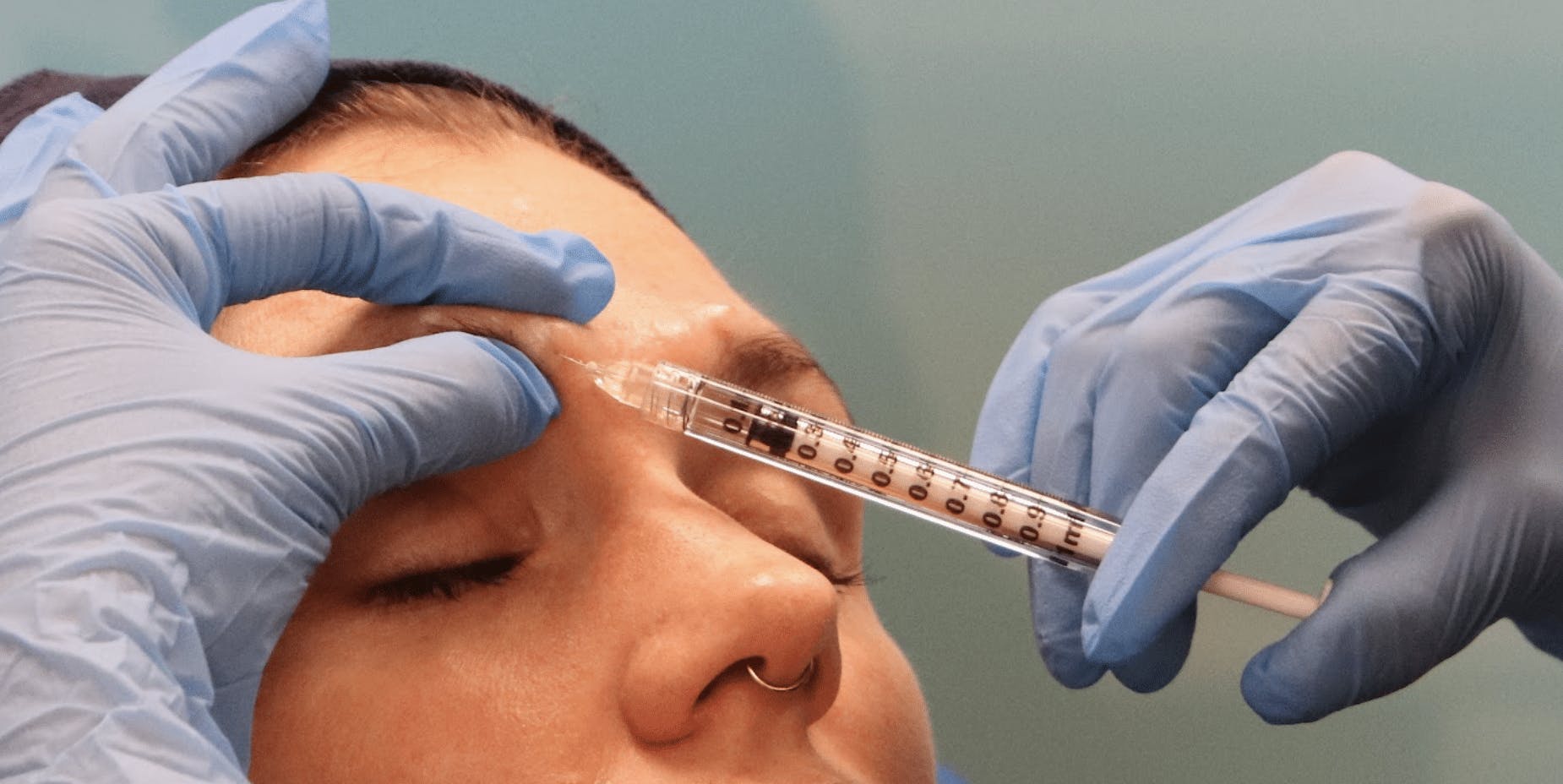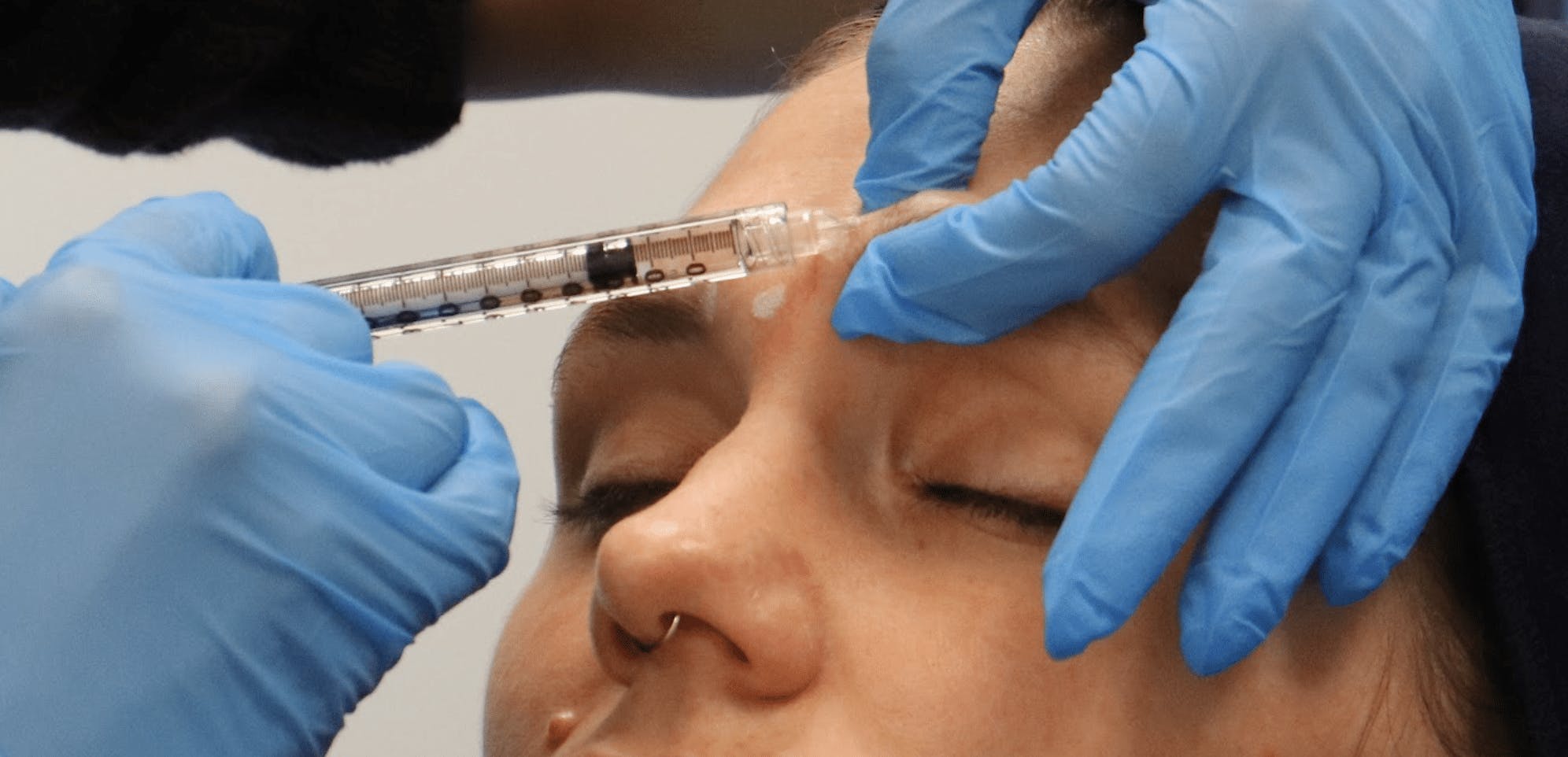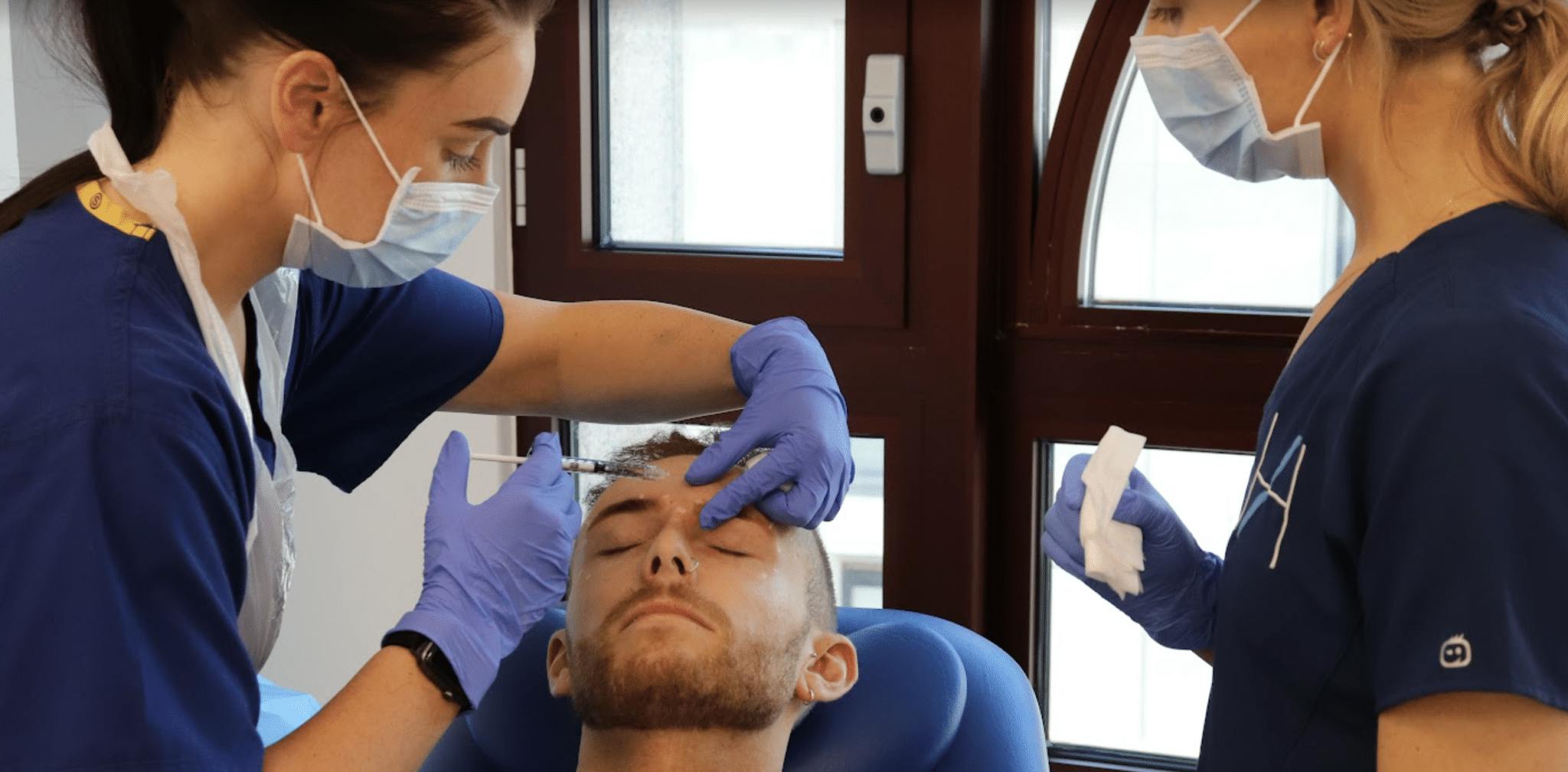How To Treat Glabellar Lines

Welcome to part two of our interview with Dr Kalpna Pindolia on how to treat glabellar lines.
Dr Kalpna Pindolia is an aesthetic medicine specialist and director of education at Harley Academy.
In part two of our interview with Dr Kal, she drills right down to the dos and don’ts of treating glabellar lines.
Read on to learn from her expert advice on the best product to use, the most effective injecting techniques and how to avoid common mistakes new aesthetics practitioners make when treating the glabella.
PS if you don’t know the difference between the glabella and the glabellar, go back to part one of her interview first...

DR KAL'S PRACTICAL ADVICE ON HOW TO TREAT GLABELLAR LINES
“If a patient has deep static lines, toxin treatments may improve the appearance of glabellar lines,” advises Dr Kal. “However, they are unlikely to eradicate them, so other treatments may be considered as well.”
Here is her advice in each instance...
What is the best toxin to use when you treat glabellar lines and why?
“All licensed UK botulinum toxin products can be used in the glabellar region. At Harley Academy we train all our students using Botox®,” notes Dr Kal. “However, you may find the Electronic Medicines Compendium (EMC) database useful for understanding which medications are licensed in the UK. If you place the toxin you are using in the search function, pharmaceutical guidance direct from the manufacturer can be reviewed.”
What’s the best injection technique to use here and why?
“Traditionally, there are 5 standard injection points. These are usually delivered using a 30 gauge needle or a finer ‘Invisible’ needle,” explains Dr Kal.
“The area should be clinically cleansed. Take the edge of your thumb or the index finger of your non injecting hand and place it firmly below the supraorbital margin. This is to prevent extravasation of toxin into the orbit”
She continues, “If the patient is asked to frown, the muscle to be injected can be palpated. Injections are placed into relaxed muscle 1cm above the supraorbital rim. Your needle should always point away from the orbit.”
“The procerus and medial corrugators can be injected quite deep at their origin,” notes Dr Kal. “But with the lateral corrugator, as it is a superficial muscle inserting into the dermis, placement should be superficial. This is to avoid toxin tracking into the levator palpebrae superioris. If this were to happen, this would cause lid ptosis.”
For those interested in some further exploration, she also points to new research. “An interesting 2021 article in the Journal of Cosmetic Dermatology proposed a 3-point injection technique,” says Dr Kal.

3 common mistakes new injectors when treating glabellar lines
“Injecting too superiorly above the supraorbital rim affecting inferior frontalis fibres causing medial brow ptosis. To avoid this, inject into the palpable muscle at its origin, not into the lines or furrows created by the muscle action.”
“Injecting too laterally, placing at the lateral corrugator, causing lateral brow ptosis. Remember to consider toxin diffusion of approximately 1-1.5cm to avoid this.”
“Injecting the lateral corrugator too deeply, causing a lid ptosis. Avoid this by injecting superficially into the lateral corrugators.”
What other treatments can be used in the glabella region?
“First of all, all patients should be counselled about how to prevent skin ageing in general,” instructs Dr Kal. “This would predominantly be by limiting sun exposure and using a broad spectrum SPF30-50 every day. Additionally, using topical powerhouse skin-boosting products, such as retinol. This approach should continue as patients age.”
She further directs, “Microneedling is a superb method of causing controlled injury to the skin. This stimulates collagen production to manage fine lines, thin skin and poor texture. Therefore, this may also be considered, especially where skin texture is of concern.”
“Whilst the subject is debated, in my opinion, dermal filler is a no-no in the glabella region. The risks of vascular occlusion and retinal compromise is too high for the benefit gained,” warns Dr Kal.
Adding, “Non cross linked skin boosters may be an option, but are unlikely to cause significant change where deep lines need to be managed.”

BOTOX TRAINING COURSES FOR HEALTHCARE PROFESSIONALS
If you’re a licensed doctor, dentist, nurse or midwife looking to learn how to practise botox, let us help.
Beginners can start with an entry level Foundation Training or Core Training in Botox and Dermal Filler course.
Those with intermediate to advanced aesthetic medicine training, can pursue our gold-standard postgraduate course: the Level 7 Diploma in Botox and Dermal Fillers. This Ofqual-regulated course offers the highest standard of injectables training whether you’re looking to advance your knowledge, undergo in-depth mentoring or safeguard your future as an aesthetics practitioner in the UK.
We offer a number of Level 7 options, including a Fast Track Level 7 and a combined Cosmetic Dermatology course.
Our Student Recruitment team is waiting to hear from you and can recommend the perfect training pathway based on your unique situation. Book a call with them to discuss becoming #HarleyTrained, today!
All information correct at the time of publication.
Download our full prospectus
Browse all our injectables, dermal fillers and cosmetic dermatology courses in one document
By submitting this form, you agree to receive marketing about our products, events, promotions and exclusive content. Consent is not a condition of purchase, and no purchase is necessary. Message frequency varies. View our Privacy Policy and Terms & Conditions
Attend our FREE open evening
If you're not sure which course is right for you, let us help
Join us online or in-person at our free open evening to learn more
Our Partners














STAY INFORMED
Sign up to receive industry news, careers advice, special offers and information on Harley Academy courses and services

